If it was under a rock near the river, it was almost certainly preparing to metamorphose into an adult. They seek out some protected spot on land to go through this phase.Somerstamp wrote: Mon Jun 23, 2025 8:17 pm I had no idea that dobsonfly larva could be so big and not be totally submerged in water.
Awesome. Thank you!
-
livingplanet3
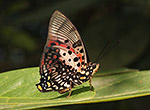
- Premium Member - 2025

- Posts: 717
- Joined: Tue May 24, 2022 4:55 pm
Re: Who are you?! Help!
by livingplanet3 » Mon Jun 23, 2025 11:36 pm
-
Somerstamp

- Posts: 2
- Joined: Tue Jun 17, 2025 4:48 pm
Re: Who are you?! Help!
by Somerstamp » Mon Jun 23, 2025 8:17 pm
Awesome. Thank you!
-
livingplanet3

- Premium Member - 2025

- Posts: 717
- Joined: Tue May 24, 2022 4:55 pm
Re: Who are you?! Help!
by livingplanet3 » Mon Jun 23, 2025 8:09 pm
https://mdc.mo.gov/discover-nature/fiel ... llgrammite
https://en.wikipedia.org/wiki/Dobsonfly
In New York, the local species of dobsonfly is Corydalus cornutus -
https://en.wikipedia.org/wiki/Corydalus_cornutus
-
Somerstamp

- Posts: 2
- Joined: Tue Jun 17, 2025 4:48 pm
 Who are you?! Help!
Who are you?! Help!
by Somerstamp » Mon Jun 23, 2025 7:55 pm
The iNat and Seek apps have no idea. Says it may be some sort of arthropod. I'm scouring my insect books...nothing.
Please help! I need to know what it is! It was so cool.
- Attachments
-
- IMG_1041 copy.jpeg (466.45 KiB) Viewed 45 times
-
boghaunter1
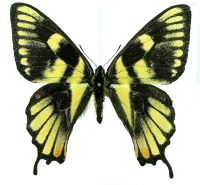
- Premium Member - 2025

- Posts: 294
- Joined: Mon May 23, 2022 7:16 pm
Beautiful Ab. P. canadensis
by boghaunter1 » Mon Jun 23, 2025 7:29 pm
This year, the lilacs really put on an impressive show in late May - early June. I spent a week (4-6 hrs. each afternoon) sitting in a lawn chair with my newly acquired close focus binoculars & naturally, of course, haha, my net. As an aside, I would highly recommend these binoculars, Pentax - "Papilio II" - 6.5X x 21... they are small, light weight, have a crystal clear image & can focus down to only 18"... & were, to boot, very reasonably sale priced... around $125.00 CAD @ Amazon. I continually scanned the lilac blossoms every day & was finally rewarded, late on 30th May, @ 6:00 pm, with the collection of a stunning aberration of our common Canadian Tiger Swallowtail, Papilio canadensis pictured below
In the distant past I've had the good fortune to collect 2 other interesting abs. of P. canadensis... ab. "fletcheri" which is familiar to long time members/viewers of insectnet.com & the unusual ab. pictured in my avatar... ab. "radianthus"?
The next day, 1st of June, on the same lilac bushes, I collected a perfect, freshly emerged, male Black Swallowtail (P. polyxenes asterius)... only the 3rd ever collected in my area. I can post photos later, if wanted, of this latest P. canadensis ab., as it is still on the spreading board ... I leave all my lepidoptera specimens on the boards for a month, minimum, to ensure complete dry down with no drooping.
John K.
[attachment=2]Ab. Tiger S-tail 30 May 2025 - III.jpg[/attachme
- Attachments
-
- Ab. Tiger S-tail 30 May 2025 - I.jpg (373.48 KiB) Viewed 36 times
-
- Ab. Tiger S-tail 30 May 2025 - II.jpg (399.12 KiB) Viewed 36 times
-
- Ab. Tiger S-tail 30 May 2025 - III.jpg (377.95 KiB) Viewed 36 times
-
wollastoni
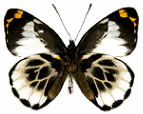
- Site Admin

- Posts: 682
- Joined: Fri Mar 18, 2022 9:51 am
Re: Hebomoia glaucippe
by wollastoni » Mon Jun 23, 2025 6:34 am
Delias are unpalatable too. That's why they are at the heart of several mimicry rings in SE Asia and New Guinea.livingplanet3 wrote: Mon Jun 23, 2025 3:27 am A bit technical, and I'm no chemist, but it makes me wonder if some other species of Pieridae might have similar defensive toxins.
-
livingplanet3

- Premium Member - 2025

- Posts: 717
- Joined: Tue May 24, 2022 4:55 pm
Re: Hebomoia glaucippe
by livingplanet3 » Mon Jun 23, 2025 3:27 am
Here's a 2012 paper on the subject -daveuk wrote: Sun Jun 22, 2025 9:58 pmThanks for enlightening me. Fascinating. I had no idea that Hebomoia gained protection in this way.livingplanet3 wrote: Sun Jun 22, 2025 8:43 pm Very nice! Certainly, this must be among the most impressive of the larger pierids. Of note in this species, is that its wings contain glacontryphan-M, a potent peptide toxin, which is also a component of the venom of cone snails (Conus spp.). Cone snails use this peptide (delivered via a stab from a harpoon-like, specialized radular tooth) to paralyze their prey, but in the case of Hebomoia, it must somehow function as a deterrent against predators.
https://www.pnas.org/doi/full/10.1073/pnas.1209632109
A bit technical, and I'm no chemist, but it makes me wonder if some other species of Pieridae might have similar defensive toxins.
-
daveuk

- Premium Member - 2025

- Posts: 905
- Joined: Mon May 23, 2022 8:08 pm
Re: Hebomoia glaucippe
by daveuk » Sun Jun 22, 2025 9:58 pm
Thanks for enlightening me. Fascinating. I had no idea that Hebomoia gained protection in this way.livingplanet3 wrote: Sun Jun 22, 2025 8:43 pm Very nice! Certainly, this must be among the most impressive of the larger pierids. Of note in this species, is that its wings contain glacontryphan-M, a potent peptide toxin, which is also a component of the venom of cone snails (Conus spp.). Cone snails use this peptide (delivered via a stab from a harpoon-like, specialized radular tooth) to paralyze their prey, but in the case of Hebomoia, it must somehow function as a deterrent against predators.
-
livingplanet3

- Premium Member - 2025

- Posts: 717
- Joined: Tue May 24, 2022 4:55 pm
Re: Hebomoia glaucippe
by livingplanet3 » Sun Jun 22, 2025 8:43 pm
-
daveuk

- Premium Member - 2025

- Posts: 905
- Joined: Mon May 23, 2022 8:08 pm
Re: Hebomoia glaucippe
by daveuk » Sun Jun 22, 2025 7:27 pm
- Attachments
-
- Screenshot_20250622_202458_Gallery.jpg (697.63 KiB) Viewed 66 times
-
wollastoni

- Site Admin

- Posts: 682
- Joined: Fri Mar 18, 2022 9:51 am
Re: Baird's swallowtail - side to side wing size variation
by wollastoni » Sun Jun 22, 2025 9:09 am
-
kevinkk
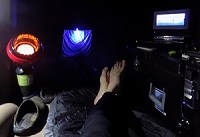
- Premium Member - 2025

- Posts: 533
- Joined: Mon May 23, 2022 5:06 pm
Re: Possible Scammer - Amy Carryington/Nelson Mhongo
by kevinkk » Sat Jun 21, 2025 6:42 pm
There are more flags, but sometimes I wonder if posting them is undermining our efforts. The simplest thing is that the scammers are usually out of their element. I do want to clear up a comment I made about using peat moss- spaghnum is the moss I like using for a substrate.butterflygirl wrote: Sat Jun 21, 2025 1:19 pm I am learning very quickly and saw all the massive red flags.
I also have to admit I have been tricked, and it was from not following my own advice, and there are different kinds of "scammers", for some, apparently it's a job, for others, they just can't follow through, good intentions don't make a road.
-
boghaunter1

- Premium Member - 2025

- Posts: 294
- Joined: Mon May 23, 2022 7:16 pm
Re: Baird's swallowtail - side to side wing size variation
by boghaunter1 » Sat Jun 21, 2025 6:40 pm
Common Wood Nymph - Cercyonis pegala ino
John K.
-
butterflygirl

- Posts: 11
- Joined: Tue Aug 22, 2023 10:10 pm
Re: Possible Scammer - Amy Carryington/Nelson Mhongo
by butterflygirl » Sat Jun 21, 2025 1:19 pm
No problem!wollastoni wrote: Sat Jun 21, 2025 8:49 am Thank you for your vigilance, I have deleted his accounts.
While not as experienced as you, I am learning very quickly and saw all the massive red flags. No price in the main ad. No shipping info. Suspiciously familiar picture, I swear I've seen it in the past. A vastly different second picture with a non-American dating structure. If you look at the picture zoomed in, the date appears to be spliced in.kevinkk wrote: Sat Jun 21, 2025 2:09 am This just gets better and better.
Yes, those are Argema mimosa cocoons depicted.
In America, we also write dates differently, we write 06/20/25, not 20/06/25
While you may ship them in the USA, it is illegal since they are non natives
They spelled the species incorrectly
Member just joined, along with the apparent legit buyer
These "possible?" more like probable scammers should hook up with the ones selling Stag betels
While warnings about and praise for sellers are appropiate in the classified ads, there are a lot of experienced individuals here using this site, I cannot be scammed, and neither can most of the other users here.
I have seen a number of new persons using the classifieds, it's nice to see, but I know who is legit, and who is not just from reading your ad most of the time.
Ok. one more thing. Those Actias dubernardi cocoons in the classified ad? They look familar. maybe they aren't mine, but a few years ago, I raised a batch of a lot of the moth and sold most in bulk. I used peat moss in boxes and the larva spun those whitish nearly perfect orbs. Anyway, that's how to make a egg shaped dubernardi cocoon.
-
wollastoni

- Site Admin

- Posts: 682
- Joined: Fri Mar 18, 2022 9:51 am
Re: Possible Scammer - Amy Carryington/Nelson Mhongo
by wollastoni » Sat Jun 21, 2025 8:49 am
-
kevinkk

- Premium Member - 2025

- Posts: 533
- Joined: Mon May 23, 2022 5:06 pm
Re: Possible Scammer - Amy Carryington/Nelson Mhongo
by kevinkk » Sat Jun 21, 2025 2:09 am
Yes, those are Argema mimosa cocoons depicted.
In America, we also write dates differently, we write 06/20/25, not 20/06/25
While you may ship them in the USA, it is illegal since they are non natives
They spelled the species incorrectly
Member just joined, along with the apparent legit buyer
These "possible?" more like probable scammers should hook up with the ones selling Stag betels
While warnings about and praise for sellers are appropiate in the classified ads, there are a lot of experienced individuals here using this site, I cannot be scammed, and neither can most of the other users here.
I have seen a number of new persons using the classifieds, it's nice to see, but I know who is legit, and who is not just from reading your ad most of the time.
Ok. one more thing. Those Actias dubernardi cocoons in the classified ad? They look familar. maybe they aren't mine, but a few years ago, I raised a batch of a lot of the moth and sold most in bulk. I used peat moss in boxes and the larva spun those whitish nearly perfect orbs. Anyway, that's how to make a egg shaped dubernardi cocoon.
-
butterflygirl

- Posts: 11
- Joined: Tue Aug 22, 2023 10:10 pm
Possible Scammer - Amy Carryington/Nelson Mhongo
by butterflygirl » Fri Jun 20, 2025 7:23 pm
- Attachments
-
- 1000030873.jpg (62.09 KiB) Viewed 104 times
-
- Screenshot 2025-06-20 150933.png (392.42 KiB) Viewed 104 times
-
Trehopr1
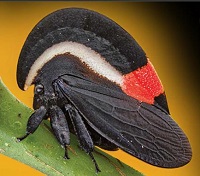
- Global Moderators

- Posts: 1133
- Joined: Thu Mar 31, 2022 1:48 am
Re: P multicaudata grandiosus
by Trehopr1 » Fri Jun 20, 2025 6:56 pm
A superb choice indeed for subject matter.
Thank you for sharing with us.
-
Miguel

- Posts: 34
- Joined: Mon May 23, 2022 4:51 pm
Re: Journalists- total morons
by Miguel » Fri Jun 20, 2025 4:55 pm
-
Chuck

- Posts: 1438
- Joined: Mon May 23, 2022 2:30 pm
Re: Journalists- total morons
by Chuck » Fri Jun 20, 2025 3:29 pm
When I read/ see something like this, the entire article must be considered suspect and discredited. While one reader may catch such a fundamental error, how does one know what else is wrong?joachim wrote: Thu Jun 19, 2025 7:18 pm basically good article... fecal pellets of the caterpillars were described as the eggs of the caterpillars.
